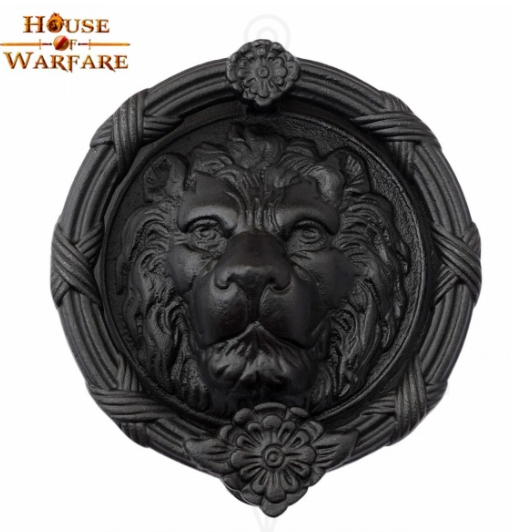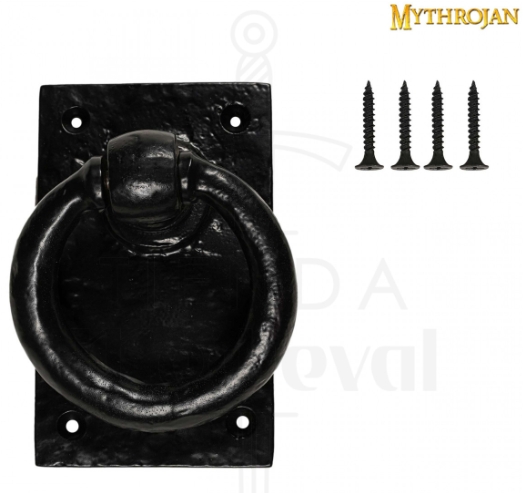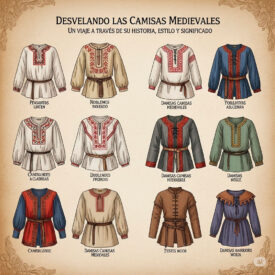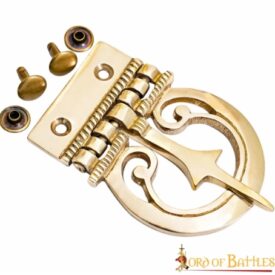Have you ever stopped in front of an old door, admiring that piece of metal hanging there, waiting to be struck to announce a visit? Those fascinating pieces, known as door knockers or knockers, are much more than just a mechanism to announce our arrival. They are silent witnesses to centuries of history, art, and culture—a true language engraved into the wood or metal of our homes. In a world where electric doorbells are the norm, door knockers invite us on a journey to the past, reminding us of a time when every knock told a story and every design revealed secrets about its inhabitants. Join us to discover the rich legacy of these enigmatic door ornaments, authentic jewels of craftsmanship that have survived the passage of time.
What Exactly Are Door Knockers? Their Original Function
Before electricity lit up our lives and the buzzing of doorbells became the soundtrack to our entrances, the main function of the door knocker was eminently practical: to alert a home’s occupants to the presence of someone at the door. These pieces, generally forged in iron or cast in bronze, were fixed to the door and consisted of two essential parts: a movable ring or hammer, and a base or fixed anvil. When struck, the hammer produced a characteristic, robust, and resonant sound that traveled through the wood and was heard inside. In addition to their purpose as a “notifier,” they also served as practical handles to close the heavy doors of old—an ingenious dual function that speaks to their clever design.
The Fascinating Origin of the Name and Its Ancient Roots
The word “aldaba” has a surprising and profound etymological origin that takes us directly to the Iberian Peninsula under Arab influence. It derives from the Hispano-Arabic “aḍ-ḍabba”, and this in turn from the classical Arabic “aḍ-ḍabbah”, which literally means “lizard.” This curious designation is due to the fact that some of the original forms were unmistakably reminiscent of this reptile, with its elongated body and characteristic movement. In fact, in the current Arab world, the word “dabbah” has evolved to refer to the bolt or latch that secures doors, maintaining that connection with home security and access.
But the story of door knockers is even older than its Arabic etymology in Spanish. Their earliest examples date back to ancient civilizations. It is believed that in ancient Greece, the custom was even more rudimentary and direct: slaves were chained to a heavy ring at the door to receive guests. The knocker, a piece of metal, was used if the slave fell asleep—striking it to wake him and ensure he fulfilled his duty. The Romans, inheritors of much of Greek culture, adopted and refined this custom, spreading it throughout their vast empire and leaving bronze knockers as testimony of their presence from Britannia to North Africa. In the Iberian Peninsula, Roman and later Arab influence left an indelible mark on knocker design, blending Roman functionality with exquisite Islamic ornamental aesthetics. The word “aldaba” itself wouldn’t appear in Spanish texts until the 15th century, but its legacy had already been forged on our doors for centuries.
Evolution Over the Centuries: From Simple to Ornamental
The appearance of knockers has changed drastically over time, becoming a mirror of the artistic styles, technical capabilities, and social values of each era.
Middle Ages: Symbols of Power and Protection
During the Middle Ages, the use of wrought iron knockers became widespread throughout Europe, especially on doors of grand manor houses, castles, monasteries, and cathedrals. In a time of uncertainty and feudal power, they were not just a way to knock but became powerful symbols of status and protection. Large, heavy, robust designs prevailed, often featuring Gothic motifs such as pointed arches, complex tracery, figures of saints, mythological beasts, or heraldic shields proclaiming the resident family’s lineage. The deep, resounding tone of these knockers was a statement of authority.
Renaissance and Baroque: The Rise of Ornamentation
With the arrival of the Renaissance and later the Baroque, knocker design experienced an explosion of creativity and refinement. Pure functionality gave way to artistic expression. The shapes became much more elaborate and decorative, inspired by the revival of classical ideals. Curved forms, acanthus leaves, human or mythological faces (fauns, satyrs), dolphins, and floral motifs became extremely popular, reflecting the taste for detail and the elegance of the era. Bronze became the preferred material, allowing cast works of astonishing finesse and complexity.
18th and 19th Centuries: Wealth, Status, and the Popular Hand
In the 18th and 19th centuries, door knockers became even more intricate and were a clear reflection of the owner’s wealth and social standing. The emerging bourgeoisie adopted this element to emulate the aristocracy, commissioning unique pieces to display their success. By the mid-19th century, hand-shaped knockers became amazingly common, thanks to cheaper casting processes that enabled mass production. This design, full of symbolism, spread across Europe and America.
Modernity: From Function to Decoration
With the invention and popularization of electric doorbells at the end of the 19th century and beginning of the 20th, knockers lost much of their practical function. It seemed they were destined to disappear. However, their immense decorative and symbolic value endured. They remained essential in the restoration of historic buildings and began to be appreciated as a touch of distinction and classicism in contemporary architecture. Today, they’re experiencing a revival thanks to the boom in vintage, rustic, and industrial styles.
The Secret Language of Doors: Symbolism and Hierarchy
Beyond their practical function or aesthetic value, old door knockers have always been powerful silent communicators. In cities like colonial Cartagena de Indias, they were a clear indicator of social hierarchy, economic power, and the occupation of household owners. The magnificence of the door knocker was directly proportional to the family’s prestige. This gave rise to the well-known proverb: “De tal casa tal aldaba” (As the house, so the knocker), perfectly summing up how this object could tell the story of its inhabitants without a single word.
Often, the shapes of knockers reflected the identity or profession of those living in the home, creating a fascinating visual code:
- Lizards or Alligators: This design, relating to the word’s etymological origin, indicated that the inhabitants belonged to royalty or the highest nobility. They were also associated with protection and vigilance, as it was believed these reptiles warded off evil spirits with their watchful stare.
- Lions: The lion’s head is among the most universal and powerful motifs. They were common in the homes of high-ranking military personnel, church families, or important government officials. They symbolize strength, courage, nobility, power, and authority. The famous knocker on the door of 10 Downing Street in London is a striking lion’s head.
- Fish or Dolphins: These were often found in the houses of wealthy merchants, ship owners, or explorers. They symbolized a direct link to sea trade, abundance, and the prosperity brought by the sea. A fish with Poseidon’s trident could represent mastery of the seas.
- Horses: A universal symbol of speed, strength, endurance, and leadership, this motif was commonly used in the homes of high officials, royal messengers, or cavalry officers.
- Hands: Possibly one of the most popular and meaningful designs. In its most basic form, an outstretched hand signifies welcome, friendship, and hospitality. However, they often represent the “Hand of Fatima” or “Hamsa.” This ancient symbol, shared by Arab and Sephardic Jewish cultures, whose name means “five” (referencing the five fingers and five pillars of Islam), is considered a powerful talisman for protection against the evil eye, envy, and misfortune. Some of these hands bear a ring, which could simply signify opulence or, more likely, serves as a protective “Turkish eye” to ward off the evil eye.
- Gargoyles and Mythological Creatures: Grotesque, often frightening figures were used as apotropaic amulets. Their function was to drive away demons and evil spirits, protecting the home from negative influences.
- Horseshoes: A classic symbol of good luck in many cultures. Hanging a horseshoe on the door (with the ends upward to “catch” the luck) was said to ward off evil spirits and attract fortune.
- Anthropomorphic Heads: These often depicted bearded, fierce-looking men, with roots in Greco-Roman mythology, like river gods or nature spirits, acting as guardians of the threshold.
Even their placement could hold meaning. In many Islamic villages, it was customary to put two different knockers on the main door: one on the right, more angular and with a deep sound, for men, and one on the left, rounder and with a high-pitched sound, for women. This way, one could tell from inside whether a man or woman was at the door, and who should go to answer.
Materials and Craftsmanship: The Artistry Behind Door Knockers
Traditionally, knockers have been made from metals that offer the ideal combination of durability and malleability for crafting complex designs. The choice of material wasn’t only a practical matter, but also one of status and style.
Wrought Iron: The Soul of the Knocker
Wrought iron is, without a doubt, the material par excellence for rustic and medieval knockers. Its incredible strength and the ability to be shaped red-hot by skilled hands allowed for the creation of unique, robust, and character-filled pieces. The forging process involved heating the metal in a forge until incandescent, then hammering it into shape on an anvil. This artisanal technique ensured that no two pieces were exactly alike.
Bronze: Elegance and Durability
Bronze, an alloy of copper and tin, became popular for its fine finishes, resistance to corrosion, and ability to capture the subtlest details in the casting process. It was the favorite material during the Renaissance and Baroque for decorative knockers. The lost-wax casting process allowed artists to create extraordinarily complex designs, impossible to achieve by forging.
Brass and Copper: Shine and Character
Brass, an alloy of copper and zinc, was valued for its bright golden color and luster, which brought a touch of luxury and distinction. Copper, less common, was appreciated for its characteristic reddish tone and the beautiful green patina (verdigris) it develops over time—a highly prized sign of noble aging.
Modern Materials: Renewed Tradition
Today, although traditional materials are still used, modern metals like stainless steel are also employed for their durability and contemporary look, or lacquered aluminum that allows for a wide range of colors and finishes at a lower cost, especially for mass-produced pieces.
Door Knockers Today: A Living Legacy That Beautifies Our Doors
Although modern doorbells have assumed the lead functional role, knockers remain a highly valued and admired architectural feature. They are coveted pieces in the restoration of historic buildings, where their presence is necessary for stylistic fidelity. But their allure goes further: in contemporary architecture, installing a classic or designer knocker is a statement of intent—a way to add a touch of history, character, and elegance to a modern door.
Collectors and artisans continue to value and create these pieces, often using the same traditional forging and casting techniques passed down through generations. In cities with a rich colonial past such as Cartagena de Indias, knockers are a prime tourist attraction, with specialized guides explaining their deep meaning to fascinated visitors. The popularity of vintage, rustic, industrial, and farmhouse décor styles has revived interest in knockers not only for doors, but also for furniture like armoire or drawer doors, blending ornamental beauty with a touch of nostalgia.
Each knocker is a small functional work of art, a historical piece that connects us to the past and, even today, continues to tell stories and add a unique soul to our doors. Next time you encounter one, take a moment to admire its shape, feel its weight, imagine its story, and listen for the echo of the countless knocks it has received over the years.
If you feel your front door lacks the personality and charm that only a storied piece can bring, perhaps it’s time to look to the past to beautify your present.
Exploring the collection of classic and rustic style knockers and door knockers may be the first step to giving your home that distinguished and character-filled welcome you’re seeking.










